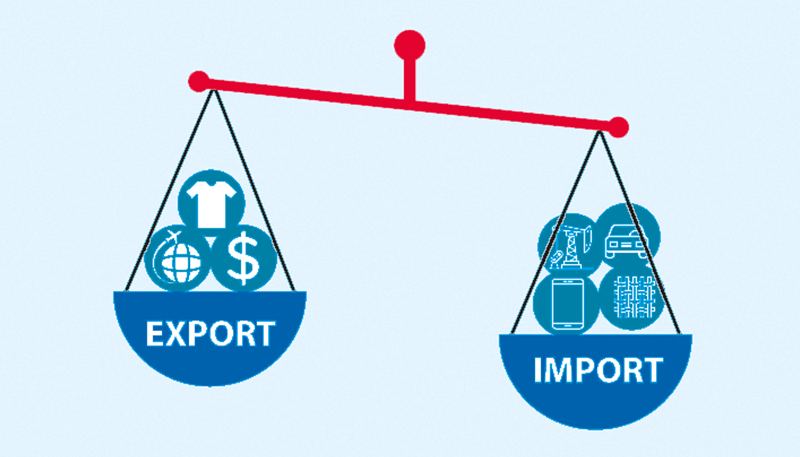Nepal's Trade Imbalance: A Mountain to Climb

KATHMANDU, Nepal - High peaks may define Nepal's landscape, but it's another summit the Himalayan nation is struggling to conquer: trade imbalance. For years, Nepal's import bill has dwarfed its export earnings, creating a chasm in its economic stability.
In 2022/23, Nepal's exports barely touched NPR 157 billion, a fraction of the staggering NPR 1.61 trillion it poured into imports. This stark contrast paints a troubling picture, with every dollar earned countered by nearly ten spent – a recipe for financial vulnerability.
So, what's holding Nepal back on the export front? Experts point to a complex array of challenges. Traditional exports like carpets and handicrafts, while renowned, face fierce competition from global giants. Infrastructure bottlenecks plague domestic producers, hampering timely delivery and raising costs. Access to international markets remains limited, with landlocked Nepal relying heavily on expensive overland routes.
The consequences of this imbalance are far-reaching. A ballooning trade deficit puts pressure on the Nepali rupee, leading to inflation and eroding purchasing power. Foreign exchange reserves dwindle, making it harder to finance vital imports like fuel and medicines. Job creation stalls, hindering economic growth and fueling social discontent.
But amidst the challenges, glimmers of hope shine through. The government has launched initiatives to boost exports, focusing on high-potential sectors like agriculture, pharmaceuticals, and hydropower. Trade agreements with neighboring countries like India and China offer new avenues for market access. Initiatives like the "One Village One Product" scheme aim to empower rural communities and diversify export offerings.
Technology, too, is playing a vital role. E-commerce platforms are providing small businesses with access to global markets, bypassing traditional barriers. Digital marketing tools are helping Nepali brands reach wider audiences. And blockchain technology is offering innovative solutions for traceability and transparency, building trust in Nepali products.
Bridging the trade gap won't be easy. It requires a sustained effort from all stakeholders – from policymakers and entrepreneurs to farmers and consumers. Building a robust export sector involves not just increasing production but also enhancing product quality, streamlining logistics, and investing in innovative marketing strategies.
The climb to trade balance may be steep, but Nepal's resilience and entrepreneurial spirit offer reasons for optimism. As the nation channels its mountain-taming spirit towards its economic landscape, the peaks of a more balanced future may come into view. The journey promises to be arduous, but the rewards – a stronger economy, greater prosperity, and a more secure future – are worth the summit.
Trade Deficit



![From Kathmandu to the World: How Excel Students Are Winning Big [Admission Open]](https://nepalaaja.com/img/70194/medium/excel-college-info-eng-nep-2342.jpg)
